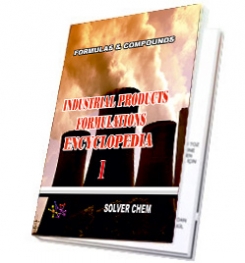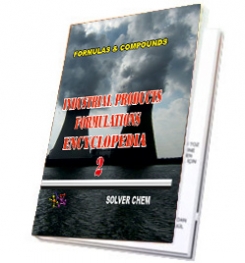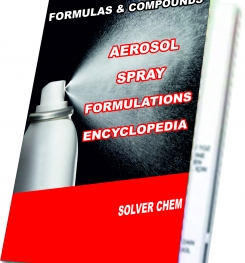
Dye or pigment
Basically dye or pigment is a material which is directly involve with printing and it’s should be characterize by four different condition. The condition to be a dye or pigment are given blew
The material should be the Physical attributes to transfer the solution color from the water to the fabric of cloth.
After make the solution of the dyes which is not soluble in water those color should be transfer from the solution to the target fabric or cloth.
Those dyes should have the ability to get into the fiber from the solution.
Those dyes should be the ability to make a strong bond with finer like this dyes a part and parcel of fiber.
Wetting agent
Hydrophobic is a character of a material which is dislike to soluble with the water this is also called water hating such as wax and oil type liquids. And the other hands there are such material can soluble with water are called water loving material like glycerin and TR oil. Every kind of objects has own surface tension which is don’t want to be damage of break, example water. Water surface tension is 73 dynes/cm.
In textile industry almost every kind of compound are supplied in powder. If we make a direct solution with water then the solution of the dyes will not mixed properly and we will get some precipitation down of pot. Question is why? Why just having this kind of problem? Simple! Reason of this problem is surface tension of the water. To solve this problem we have a great solution is called wetting agent. After used the wetting agent the surface tension of water will be less from 73 dynes/cm to among 20 to 25 dynes/cm and let that powder solution.
Solvent
Printing pest makes from the powder of pigment or dye stuff. Solvent play the role to opposition to coagulate the molecule into the dye stuff. The main reason to use solvent or dispersing agent is keep the molecule separate to make ideal print during makes the printing pest. Basically most used solvents are Acetate, ethylene glycol, alcohol, glycerol, urea and formaldehyde. Some of these elements are also work like wetting agent. Too much usage of solvent can diminish the smoothness of design.
Thickener
Thickener is a high molecular weight prominent which is makes the printing pest perfect deep and Adhesive as it can stick with fabric and output desire printing design. This thickener makes a strong bond with fiber and pigments, as a result the print never wipe by high temperature and rubbing. Thickeners should be the ideal solution so that it can soluble with every kind of elements which is used to make printing solution or pest. Different types of printing pest viscosity are different because of the methods of printing. Like roller printing deep pest and screen printing design pest is less viscosity characterized.
De-foaming agent
During the process of making printing pest and during the printing process the printing pest is handling by too many machines which frequently keep shaking the pest so that it’s produce foam into printing pest. With so much foaming printing pest can’t print properly and the foam makes so much problem during printing process. The de-foaming is used to preventing the problem of foaming into printing pest. Defamers, sulfide oil (T.R Oil) are basically known as de-foaming agent.
Catalyst and oxygen carrier
By steaming process the oxidation needs some catalyst. In this steaming process increasing temperature can damage the fiber. To prevent this kind of problem a few chemical can be used which is called catalyst. This catalyst can able to fix the color into fiber permanently.
Acid and alkali
Acid is required to dying and printing with a few dye stuff, its help those dyes to develop the color and fixing the color with fiber or fabric. Basically acid is not used in dye stuff directly so that there must used an agent which is reacting like acid. The printing pest could be used strong and medium alkali.
Carrier and swelling agent
Man made fiber or synthetic fiber, especially polyester fiber’s structure is different then others. Means this fiber is so much difficult to through the pigment into the fiber molecule by general process. Its needs high temperature to done this process from (100̊ -102̊ C). Some different elements are helping this process to dying to printing in less temperature (100̊C) such as Rapid ager, Hydrocarbon, filon. This type of chemicals and characterized chemical are called carrier and swelling agent can makes the fiber’s molecule larger then its paste so that dye or pigments can go into the fiber molecule so easily and stuck there permanently after being the molecule get paste position as usual. These kinds of chemicals are not good for fabric and human body so its necessary to remove this after complete the process.
There is another way to make this process successful by increase the temperature from (120̊C to 130̊C) if we use some carrier with this process than it’s able to give better performance.
Miscellaneous agent
Type of fabric printing, process, dye, and classification are depending by some exceptional elements which is used to print like, C (Reducing agent) & with some critical element with is used in dischar.
INDUSTRIAL TEXTILE CHEMICALS
AND
PRODUCTION METHODS
AND
PRODUCTION METHODS
MANUFACTURING PROCESS OF TEXTILE CHEMICALS is not very complicated. For the production, there is need usable and tried a formulation, raw materials and mixing tank. For raw materials to be used, quantities to be used and ingredients usage rankings, you should look into this formulation. Therefore, formulation and productıon methods of TEXTILE CHEMICALS are important. If you have not a good formulation, you cannot make healthy and efficient production of any textile chemicals.
If you need any manufacturing formulations and production methods about
TEXTILE CHEMICALS
INDUSTRIAL PRODUCTS
FORMULATIONS
ENCYCLOPEDİA - 1
is enough.

This encyclopedia has many formulations of textile chemicals and derivatives,textile pigment printing paste formulas,silicone micro emulsion preparation,cationic fixator,dispersing agent for textile chemicals,stabilizating agent in textile processing,ion immobilizing agents,hydrogen peroxide stabilizer,sequestering agents in textile chemicals,anti pilling agent in textile processing,cationic softener,nonionic softener,silicone softener manufacturing processes, sizing agent in textile chemicals,organic and organomineral fertilizers for house plants, polyurethane floor coating cleaner formulations,epoxy floor coating cleaner production process,polyurethane concrete coating cleaning detergents, formulations of emulsifier and emulsions,ultrasound gels formula,medical gels manufacturing,ecg gels making,cats and dogs care and cleaner products formulations, aircraft and airport care and cleaner products production,corrugated cardboard adhesive and hardeners resin manufacturing process,glass products,pencil types production,chalk formulations,chafing fuel gel making formulas,kindling fuel gel productions,industrial powder degreaser, industrial fluid degreaser,welding burn marks remover and cleaner products formulas,wood furniture cleaner and polisher formulation,aluminium cleaning and polishing agents formulas,fuel tank cleaner formulations,shoe care and polisher productions,wicrowave exterior cleaner making,concrete care and cleaner products manufacturing,mortar and brick cleaner formula,marble crystallizers production,toilet reservior block manufacturing process,vinyl cleaner and polisher formulations.

All industrial products in the encyclopedia are producible easily. You need no help and no technıcal support. The encyclopedia is enough to produce textile chemicals itself.
INDUSTRIAL PRODUCTS
FORMULATIONS
ENCYCLOPEDIA - 1
is written clear and understandable.
RELATED TAGS: What is textile pigment printing binder, pigment printing binder production process, textile pigment printing paste composition, compounds, formulas of textile pigment printing binder, how to make textile chemical, making textile chemicals, production of textile chemicals, textile chemicals compositions, compounds, formulations textile chemicals, textile chemicals compounds, formula of textilşe chemicals, textile chemicals manufacturing,textile chemicals manufacturer, chemicals used in textile processing, textile chemicals products,textile processing solution, how to process textile chemicals,textile chemicals formulations,textile chemicals production process.
ENCYCLOPEDIAS AND CONTENTS
ENCYCLOPEDIAS AND CONTENTS

|
|

|
|

|
|
